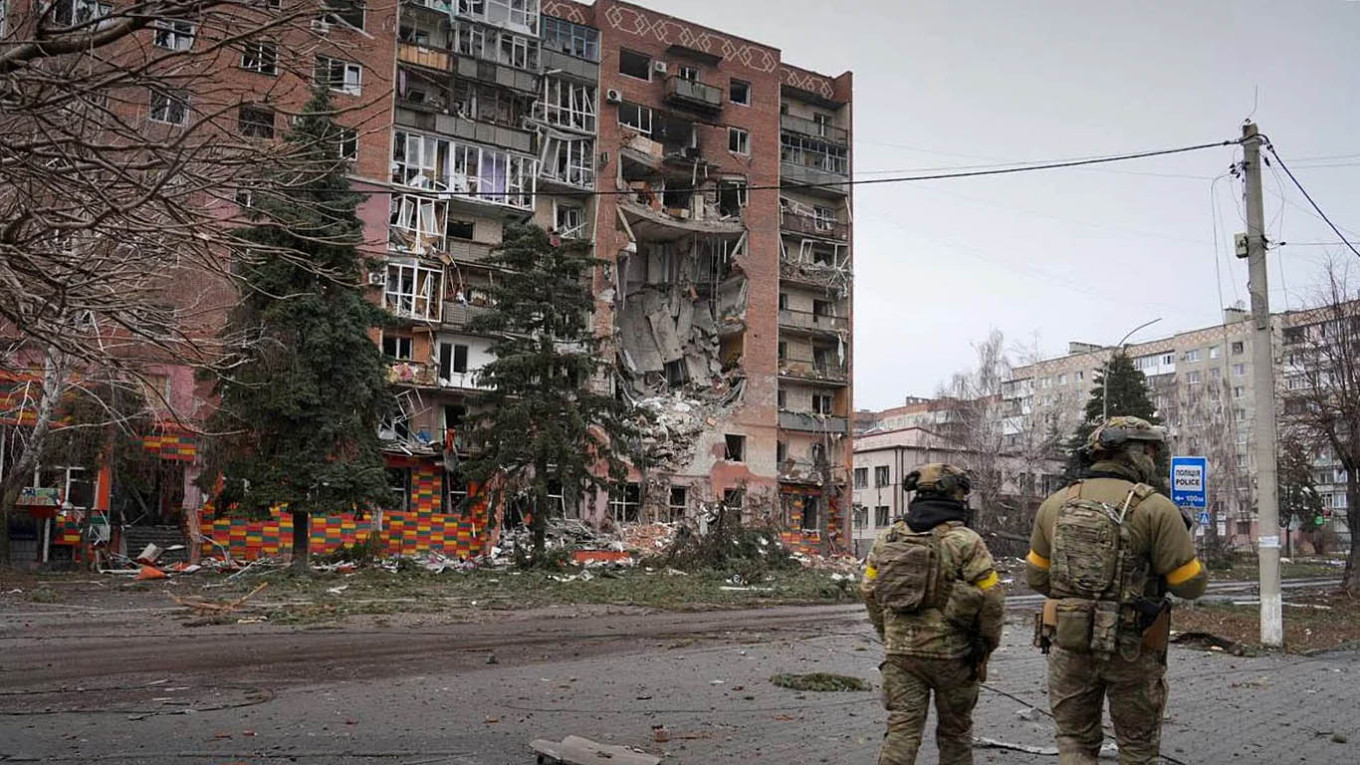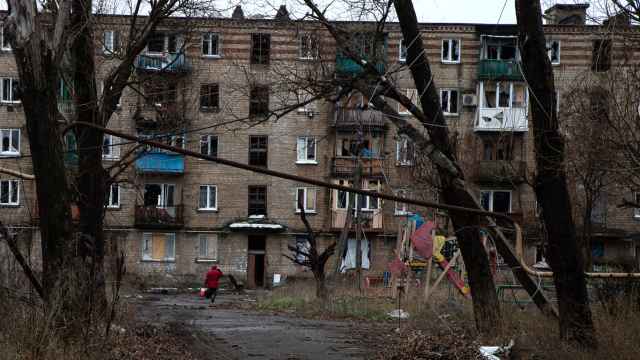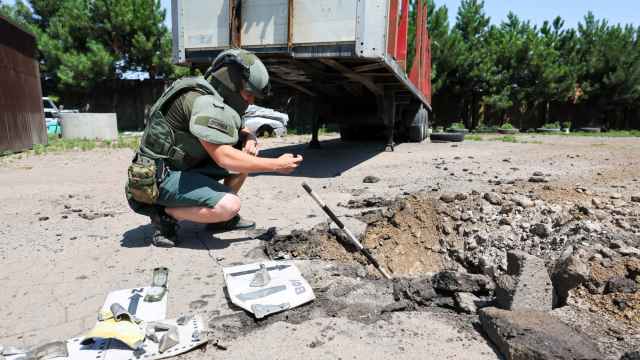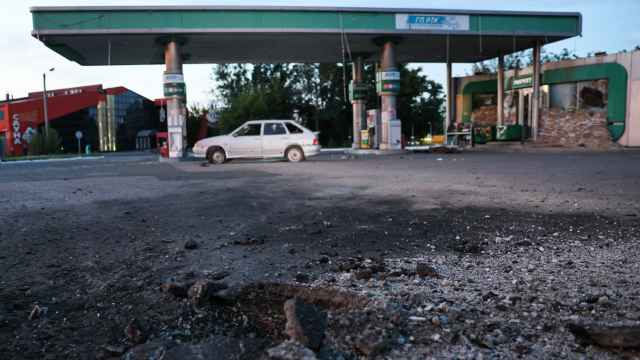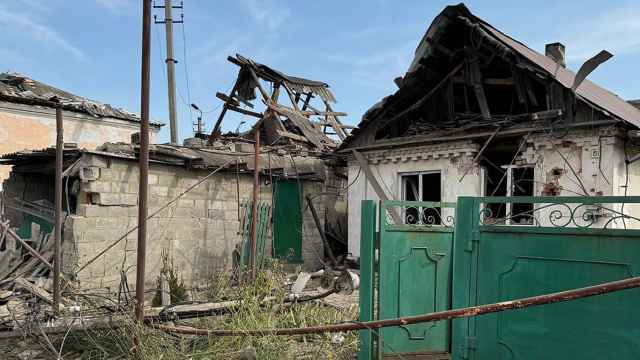KYIV, Ukraine — Fierce fighting continues to engulf the eastern city of Pokrovsk as Russian forces press a prolonged campaign to seize this industrial hub in Ukraine’s Donetsk region.
Once home to some 60,000 people, Pokrovsk has weathered more than a year and a half of relentless bombardment. Now, the battle for the city has entered a critical phase.
Western military analysts say Russian troops have steadily edged into Pokrovsk’s southern outskirts, wearing down Ukrainian defenses and using worsening late-autumn weather to move men and equipment closer to the front. The fight, they note, has settled into a grinding contest of attrition that has stretched Ukrainian units thin.
“The main problem is logistics,” said Artem, a Ukrainian drone operator fighting near Pokrovsk, who asked to be identified only by his first name. “The roads are completely choked by Russian drones. No vehicle can enter or leave the city without being immediately detected.”
Even in those conditions, Ukrainian formations, including those from the 25th, 7th, and 68th brigades, continue to hold parts of Pokrovsk and nearby Myrnohrad, a small city located around seven kilometers to the east.
Artem said the clashes have intensified in recent weeks as Russian troops resumed mechanized assaults.
“They send about ten armored vehicles at once toward our positions,” he told The Moscow Times. “Normally, we can destroy them quickly, but with the fog, rain and low winter clouds, our reaction time is slower. We destroy most of them, but some still manage to break through and drop off troops inside the city.”

Michael Kofman, a military analyst and senior fellow at the Carnegie Endowment for International Peace, said Ukraine’s 7th Rapid Response Corps — which assumed responsibility for the sector in July — has struggled with deteriorating conditions and limited reserves. With little room to maneuver, he said, commanders have been forced to shuttle scarce resources from one threatened position to another.
On the ground, Russian units have pushed into the Shakhta district, the city’s industrial center.
“Once they get in, it’s almost impossible to dislodge them,” Artem said. “They hide in basements and tunnels, wait for reinforcements and move house to house. That’s how they advance.”
Encirclement and chaos
Like Bakhmut before it, Pokrovsk has become a symbol of Ukrainian resistance, and one of the last major cities in southern Donetsk that Russians must take before they can attempt a push toward the cities of Druzhkivka, Kramatorsk, and Sloviansk.
During a visit to a military hospital in Moscow late last month, President Vladimir Putin claimed that Pokrovsk was already encircled. That assertion was swiftly rejected by Oleksandr Syrskyi, Ukraine’s top general, who wrote in early November that Ukrainian forces “must withstand the pressure of an enemy grouping of several thousand men, which continues to attempt to infiltrate residential areas and cut our supply routes.” However, Syrski said, “there is neither an encirclement nor a blockade” of the city.
Ukrainian President Volodymyr Zelensky echoed that warning, saying the Russian military’s “number one goal is to occupy Pokrovsk as quickly as possible.” The pace of recent attacks, he said, made that clear: 220 assaults in just three days. Inside the city, according to military data he cited, some 314 Russian troops are already operating.

Because of its symbolic weight, the fight for Pokrovsk carries significant political stakes for both Kyiv and Moscow. As with Bakhmut and Avdiivka, it has raised questions about how long Ukrainian commanders will try to hold the city, as well as whether they may eventually order a coordinated pullback to defensive lines on its outskirts.
But Artem, the Ukrainian drone operator, told The Moscow Times that the situation in nearby Myrnohrad is deteriorating as well. Holding the town, he warned, is becoming increasingly difficult. He believes the high command should order an evacuation, though he fears “it might already be too late.”
His concerns appear to be supported by the work of a open-source investigators, who used drone footage to confirm the presence of Russian reconnaissance troops beyond a major highway that links Myrnohrad and Pokrovsk, east of the village of Rivne. The video shows Russian soldiers capturing a Ukrainian serviceman.
The seizure of that crossroads suggests that Ukrainian troops fighting in the Pokrovsk pocket, and south of Myrnohrad, may now be partly encircled.
Still, with the situation shifting rapidly, it remains difficult to determine whether the front lines have settled.
“It’s such chaos that it’s hard to know where our troops are,” Artem said. “The front has become so porous that Russian soldiers can be behind our lines and vice versa. It’s now a house-to-house battle.”
That instability, he added, could paradoxically help trapped Ukrainian troops slip out on foot should a withdrawal be ordered. “It’s a march of more than ten kilometers under constant drone attack,” Artem said, “but it’s still possible.”
What comes next
Artem said he believes that Ukraine has already achieved its main objective in Pokrovsk: forcing Russia to pour men and resources into the fight for more than a year, significantly weakening its forces.
But he finds little cause for celebration. “For the Russians, the men they send to die mean nothing. They’ll always have more,” Artem told The Moscow Times. In his view, the real measure of success lies in destroying as much Russian equipment as possible, strengthening defensive lines in the rear and buying time.
According to analyst Kofman, the current situation remains more favorable for Ukraine than the battle around Avdiivka in 2024.
Russian troops, Kofman notes, lack momentum after an offensive push that depleted much of their combat power. They are advancing only slowly and cannot sustain heavy pressure along the line. Their tactics now depend largely on small infantry groups moving on foot, slipping into buildings and defensive positions while awaiting reinforcements.
Without the ability to bring in armored vehicles or tanks to capitalize on those gains, their assaults remain limited and have failed to produce a decisive breakthrough, according to Kofman.
If Pokrovsk falls, Russian troops could operate drones directly from within the city, turning it into a forward base from which to push Ukrainian units farther west.

Sébastien Gobert, a French journalist and author of a book on Ukrainian oligarchs, believes Pokrovsk is likely irretrievably lost and that the central question now is how to prepare for the next major assault.
“The city has not yet fallen, but we must already begin to draw lessons from this battle,” he told The Moscow Times. “We must reflect on Ukraine’s ability to resist in future battles, particularly in terms of human resources.”
Gobert pointed to long-standing problems in Ukraine’s mobilization, recruitment and training, issues that emerged in 2022 and 2023 and remain unresolved. Russia, meanwhile, continues to recruit several thousand more soldiers each month than Ukraine.
“Pokrovsk is yet another test for Ukraine,” Gobert said. “It will show whether the high command will choose to preserve its troops or cling to the city as it did in Bakhmut until the very last moment in order to inflict maximum losses on the enemy. The command is already heavily criticized for staying so long.”
The battle, he added, has become as much a political test as a military one — a measure of the trust between Ukraine’s government, its armed forces and its society. The military test, he said, has already been lost, with Pokrovsk on the brink of falling.
What remains is the question of trust: whether the public and the troops will maintain confidence in the country’s leadership after the city is lost.
“When Pokrovsk falls,” he added, “the front will not collapse by itself, but this new test will determine Ukraine’s capacity for resistance and endurance in the battles to come.”
A Message from The Moscow Times:
Dear readers,
We are facing unprecedented challenges. Russia's Prosecutor General's Office has designated The Moscow Times as an "undesirable" organization, criminalizing our work and putting our staff at risk of prosecution. This follows our earlier unjust labeling as a "foreign agent."
These actions are direct attempts to silence independent journalism in Russia. The authorities claim our work "discredits the decisions of the Russian leadership." We see things differently: we strive to provide accurate, unbiased reporting on Russia.
We, the journalists of The Moscow Times, refuse to be silenced. But to continue our work, we need your help.
Your support, no matter how small, makes a world of difference. If you can, please support us monthly starting from just $2. It's quick to set up, and every contribution makes a significant impact.
By supporting The Moscow Times, you're defending open, independent journalism in the face of repression. Thank you for standing with us.
Remind me later.



